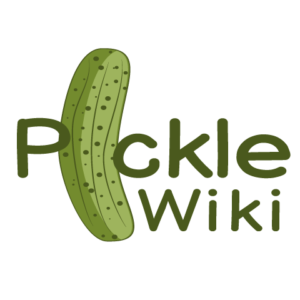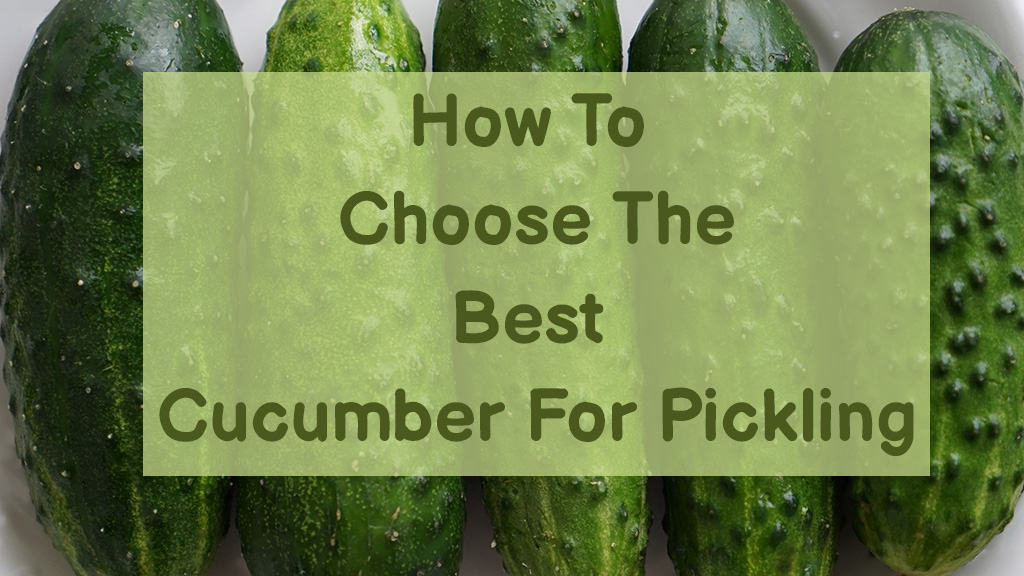A good pickle starts with picking the best cucumbers you can get your hands on. Whether you purchase your cucumbers at the grocery store, pick them up at your CSA, or grow your own, you’ll have much better results if you pick the best type of cucumber.
The best types of cucumbers for pickling are any variety of pickling cucumbers such as National Pickling, County Fair, and Little Leaf. Pickling cucumbers are the best size and texture for pickling. Other types of cucumbers become soft or mushy during the pickling process.
If you still have questions about how to select the best cucumber for pickling, keep reading because we have everything you need to know about picking the best cucumbers for pickling below.
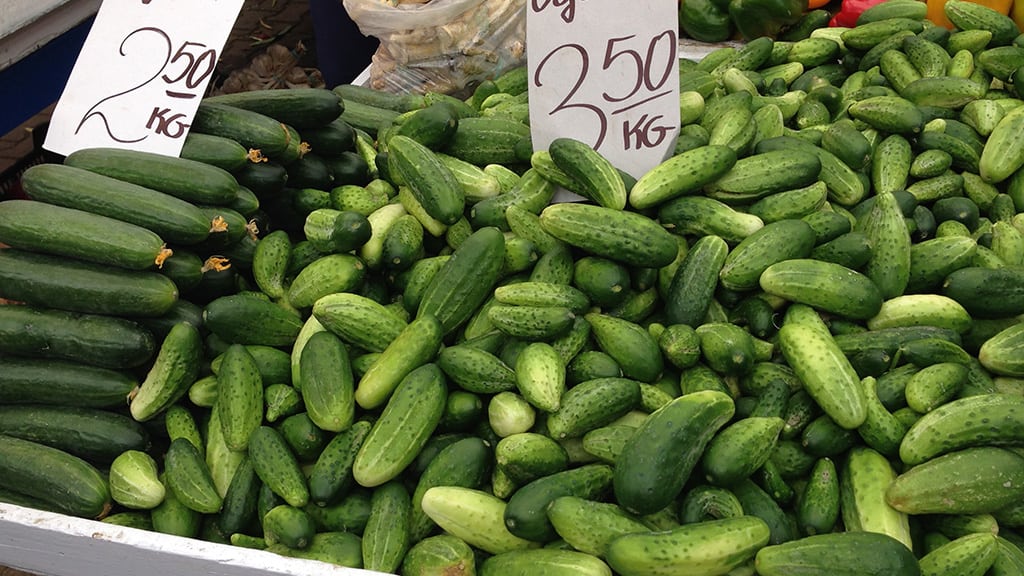
Which Type of Cucumbers Should You Use for Picking?
Not all cucumbers make good pickles, and that’s a fact. There are two general categories that cucumbers fall into: slicing cucumbers and pickling cucumbers.
As you might guess by the name, pickling cucumbers make superior pickles, but let’s take a closer look at each type of cucumber so you can understand the differences.
What is a Slicing Cucumber?
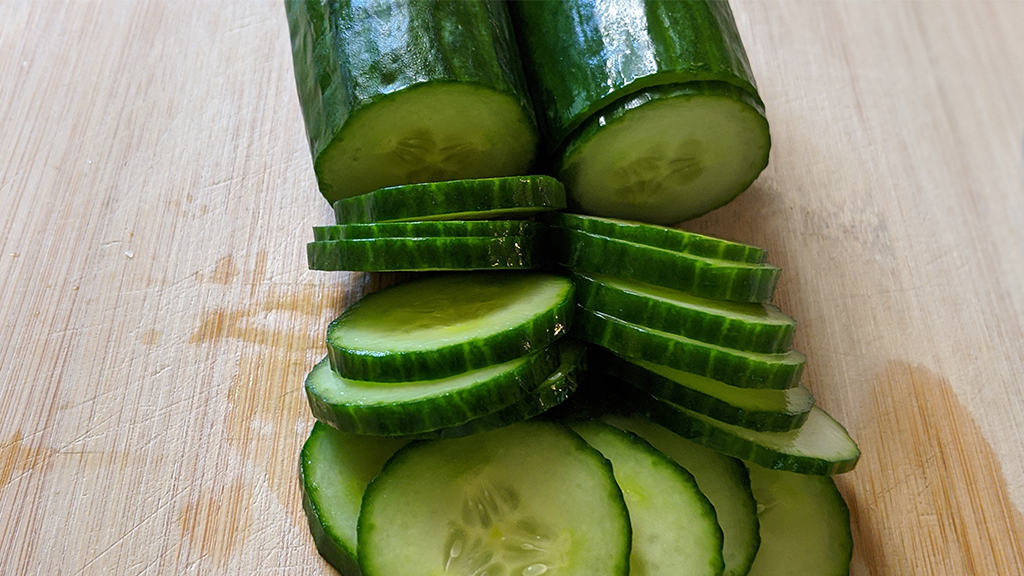
Slicing cucumbers are what most people chop up for a salad or dip into hummus. These come in many varieties, but the two most commonly found in grocery stores are:
- American Cucumbers: These are the dark green, thick-skinned cucumbers most people buy at the grocery store. They often have a waxy coating protecting their skin. They also tend to have large seeds. The thick skin and waxy coating make them poor cucumbers for pickling.
- English Cucumbers: English cucumbers go by many other names like hothouse cucumbers, burpless cucumbers, and seedless cucumbers. They are thin-skinned and usually about 12 inches long with little to no seeds. I have made some really good sliced pickles with this type of cucumber.
Slicing cucumbers need to be handled differently than pickling cucumbers, they are usually not a great option for whole pickles. They are best made into pickle slices.
Now let’s take a look at what makes pickling cucumbers so special.
What is a Pickling Cucumber?
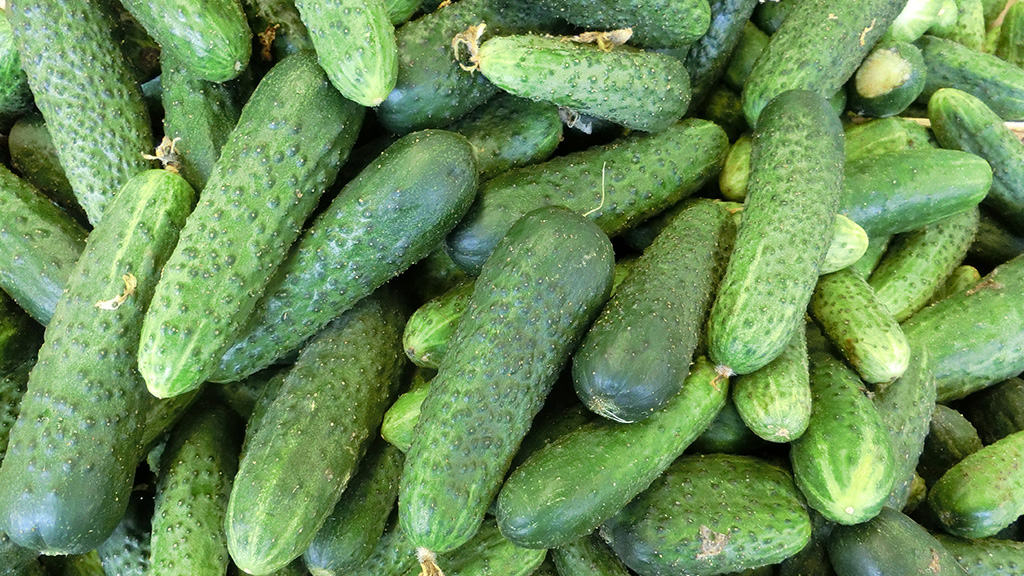
A pickling cucumber is a cucumber cultivated for making pickles. They are usually a lighter green and shorter than slicing cucumbers, and there are four important reasons that pickling cucumbers are ideal for pickles.
- Pickling cucumbers tend to be shorter than slicing cucumbers. This makes them ideal for sticking in a jar whole or in spears.
- They develop seeds more slowly than slicing cucumbers. This means that they have more flesh and smaller seeds, making them more palatable and crisper.
- They are drier than slicing cucumbers, making them an ideal candidate for taking on flavor in the jar.
- Pickling cucumbers are thin-skinned (most of the time). How thin the skin of the cucumber is will depend on the variety. The thinner skin allows the flavors of the brine to soak into the pickle more readily.
These characteristics are what make pickling cucumbers ideal for pickling, and they are just as delicious eaten fresh from the garden as any other pickle. People who only want to plant one variety of cucumber in their garden and plan to make pickles always plant pickling cucumbers because they’re delicious raw or pickled.
What are the Different Types of Pickling Cucumbers?
There are many different varieties of pickling cucumbers, especially when you start to look into heirloom varieties. Below, we’ve put together a list of some of the more popular varieties available, how big the fruit gets, how long they take to grow, and whether they are a vining or bush plant.
| Cucumber Variety | Size of Fruit | Days to Maturity | Vine or Bush? |
| National Pickling | 5-6 inches long | 55 days | Vine |
| County Fair Cucumbers | 6-8 inches long | 55-65 days | Vine |
| Little Leaf Cucumber | 3-5 inches long | 57 days | Vine |
| Boston Pickling | 3-7 inches long | 55 days | Vine |
| Parisian Pickling | 3 inches long | 50 days | Vine |
| Calypso Cucumber | 3 inches long | 50 days | Vine |
| Bush Pickle | 4-5 inches long | 45 days | Bush |
| Burpee’s Picklebush | 4 inches long | 52 days | Bush |
How to Grow Pickling Cucumbers
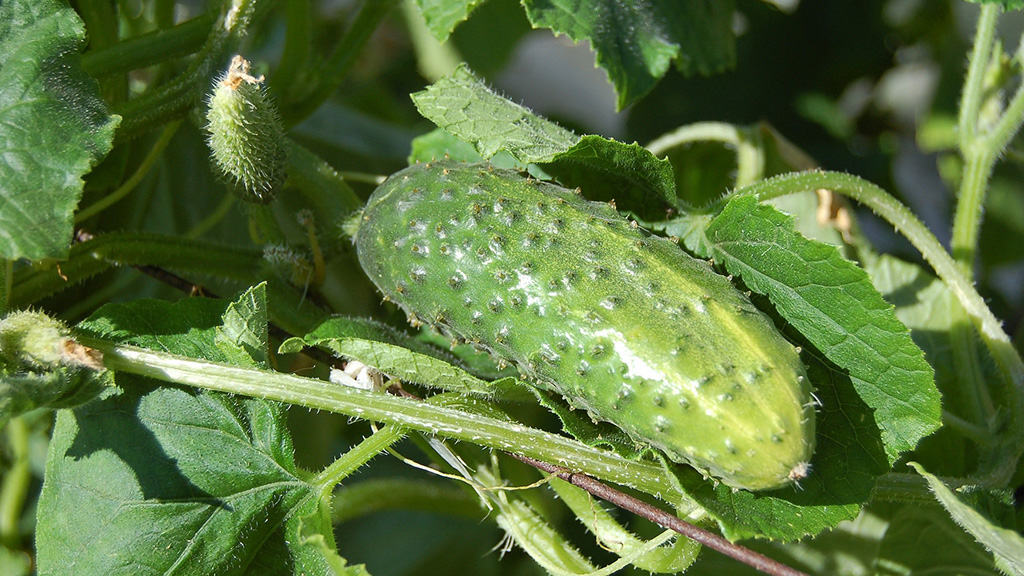
The best way to get delicious pickles is to grow your own. They’re fresh, you know if they’re truly organic, and you can grow a ton of cucumbers for just a couple dollars and some time.
Should You Grow Bush or Vine Cucumbers for Pickling?
Before you go out and buy seeds, you have to consider the space that you have for growing cucumbers. Cucumber plants grow to be surprisingly large.
- Vining cucumber plants sprawl well over 6 feet, but they can be trained to a trellis to help control the spread. They produce a lot of cucumbers.
- Bush cucumber plants, on the other hand, usually don’t get bigger than three feet in length. They are easily grown in planters on patios, but they don’t produce the same massive quantities of cucumber.
If you have enough space, a vining cucumber is the way to go, but if you’re limited, 3-5 planters of bush style cucumbers are usually enough for one family.
Growing Your Own Pickling Cucumbers
Each variety of pickling cucumber will have its own needs. You should always check your seed packet for the most relevant information. That being said, here is what you can expect when growing your own pickling cucumbers:
- Wait until all chance of frost has passed, and the ground is warm. Frost will kill your cucumber plants quickly and easily.
- Plant 3-5 seeds directly in the ground and allow at least two feet of space between groups of seeds. If you have a short growing season, you can start seeds indoors and transplant them after the danger of frost as passed.
- Plan for trellising if you want to use it. You can let your cucumbers sprawl, but trellising will look nicer and keep the fruit out of the dirt. You can set up your trellising now or wait until the plants are larger and beginning to vine.
- When the cucumber plants are about 2 inches tall, you have to thin them down. Keep only the healthiest looking seedlings. You want a maximum of three plants per group of seeds.
- You can stagger the planting of cucumbers if you don’t want to harvest them all at once. This can help keep your canning operation under control and keep you in fresh cucumbers all season long.
When to Harvest Cucumbers for Pickling
You don’t have to wait for your cucumbers to reach their full maturity before you harvest them! Many people harvest as soon as the cucumbers reach the desired size for the type of cucumber they are making. We’ll talk about this more later.
Many people choose to harvest their pickling cucumbers when they reach 3-4 inches in length. The immature cucumbers are sweet and have very small seeds.
If you’re making gherkins or cornichons, you would need to harvest the cucumbers when they are only 2 inches long!
If you’re making giant deli-style pickles, you would need to wait for the cucumber to reach full maturity, and you’d better be ready with a large container to pickle them in.
Can You Pickle Slicing Cucumbers?
We know that pickling cucumbers can be sliced and eaten raw, but can you pickle slicing cucumbers? You sure can! You can pickle any variety of cucumber as long as it fits in the jar.
However, you won’t get the same stellar results as you would get when using a pickling cucumber. Pickles made with slicing cucumbers tend to be softer, and because the seeds are much larger, they can turn some people off their pickles.
How to Improve Pickles Made with Slicing Cucumbers
If you want to use slicing cucumbers for pickles, there are some things you can do to improve the quality of the pickle:
- If growing your own cucumbers, pick them early. The seeds won’t be as large.
- You can remove seeds with a spoon and make spears.
- If the skin on the cucumber seems overly thick or has a waxy coating, you can peel the cucumber before pickling. They will be best eaten within days to avoid unpalatable mushiness.
- Soak the cucumbers in salt water and rinse before pickling to help remove excess water from the cucumber.
- Choose burpless cucumbers over waxy coated cucumbers if buying store-bought and making quick pickles. Burpless cucumber have smaller seeds and thinner skins. If making fermented pickles, burpless cucumbers won’t work, however.
If you follow these guidelines, you should avoid a pickling disaster, but we still recommend that you get your hands on actual pickling cucumbers if you want to pickle. You’ll end up with a much tastier pickle, and you’ll find yourself well on the well to pickle-making mastery.
Can You Pickle Lemon Cucumbers?
Lemon cucumbers are an heirloom variety that has become increasingly popular recently. They are ball-shaped cucumbers with a yellow skin that gives them a sort lemony look. They don’t taste anything like lemons. Most people describe them as sweet and mild compared to other cucumber varieties.
You can pickle lemon cucumbers, but you’ll still face issues with the seeds, and there is potential for mushiness. If you want to try it out, we recommend a quick pickle and eating the pickles within a couple of days so that they are firm.
Because of their ball-like shape, lemon cucumber pickles are usually chip-shaped. You can use any of your favorite pickling brine recipes with lemon cucumbers because the flavor is not all that different from a typical cucumber.
How to Pick the Best Cucumber for Pickling
All this information may be well and good, but when you’re looking at a stack of cucumbers, how do you pick the ones that make the best pickles? We’ve got you covered. When selecting cucumbers for pickling, consider the following characteristics:
The Best Size Cucumbers for Pickles
When making pickles, there is no reason to select the biggest cucumber in the bunch. In fact, larger cucumbers tend to have larger seeds, which is not desirable when pickling. They also don’t fit as well into canning jars. So, when it comes to pickling cucumbers, bigger is not better.
Instead, consider how you plan to process the cucumber before pickling.
- For pickling whole cucumbers: Stick to smaller cucumbers that are around 3-4 inches in length. Thickness, in this case, is a matter of personal preference and the size of your canning jars.
- For pickling cucumber spears or halves: It is best to choose smaller cucumbers, but longer 6-8 inch cucumbers can be cut in half so that they will fit into jars.
- For pickling cucumber chips: The length of the cucumber doesn’t matter as much when making pickle chips, but the thickness of the pickle does. You’ll want a cucumber that is over an inch in diameter and ideally one that is closer to 2 inches in diameter.
- For pickling long slices of cucumber: For long slices of pickle that you might put on a sandwich, you’ll want a stout pickle that is around 3-4 inches in length and thick enough to make slicing easy.
- For making relish: To make a relish, you’ll be chopping up the cucumber, so size doesn’t matter. We save the odd-shaped pickles in our garden for relish making.
The Best Shaped Cucumbers for Pickles
Cucumbers can grow in surprisingly odd shapes. Many are bent or crooked at one end or the other. There’s nothing wrong with these cucumbers, and they’ll stick make good pickles, but they can make stuffing your pickling jars more of a challenge.
If you are pickling your cucumbers whole, you want to pick out the straightest cucumbers in the bunch. You’ll be able to fit them more nicely in the jar, and you won’t have as much empty space between the cucumbers.
If you’re not pickling them whole, straight cucumbers will be easier to chop into your desired shape, but the shape of the cucumber matters far less. You can cut off and chop up any irregular pieces and make relishes with them or use them fresh in a salad.
The Best Skin Thickness for Cucumbers
Most people prefer pickling cucumbers that have thin skins, and indeed, this is a quality that most pickling cucumbers possess. The thin-skins are easier to bite into and chew, and they allow the brine to really soak into the cucumber. So, for the most part, you want to pick a cucumber with thin skin.
However, this is largely a matter of preference. Some may prefer pickled cucumbers with slightly thicker skins. You can experiment with a batch of cucumbers with thicker skins to see which you prefer.
Does Cucumber Freshness Matter for Pickles?
The freshness of the cucumber will absolutely make a difference in the quality of your pickle. Old dried out cucumbers will not make good pickles. As cucumbers lose their freshness, they become bitter, which results in a subpar pickle.
Overripe, yellowing cucumbers are also not a great option for pickles for the same reason.
You can tell if a cucumber is fresh by slicing it open. The flesh of the fruit should be moist and a nice, white color. If the flesh is yellowing or dry, it is too old to use, and it belongs in the compost heap.
Do Spiney Cucumbers Make Better Pickles?
The first time you grow your own cucumbers or pick some up at the farmer’s market, you might be surprised to find them covered in tiny little sharp spines. Grocery story cucumbers have their spines removed before shipping, so many don’t know about this particular feature.
Pickling cucumbers tend to have more spines than slicing varieties, but this doesn’t really make much of a difference to how your pickles turn out. The spines should be removed before pickling by rubbing a cloth over the cucumber. They aren’t poisonous, so if you miss one or two, it isn’t a big deal.
A bumpy pickle will change the mouthfeel of the pickle, but it doesn’t necessarily improve flavor or quality. Some people may prefer bumpier or smoother pickles, and some might not care one way or the other.
What are the Best Types of Cucumbers for Pickling?
The best type of cucumber for pickling is a freshly picked, pickling cucumber that is 3-4 inches in length and relatively straight shaped. The cucumber must not be overripened.
If you aren’t growing your own, it is best to get your cucumbers from local farmers because they will be the freshest. However, if that isn’t an option, grocery store pickling cucumbers are just fine.
Slicing cucumbers should be avoided when making pickles. If you must pickle a slicing cucumber, a quick pickle is best, and they should be eaten quickly to avoid mushiness.
Of course, you can pickle just about anything, and any variety or size of cucumber can be pickled, but the results will not always be as good.
